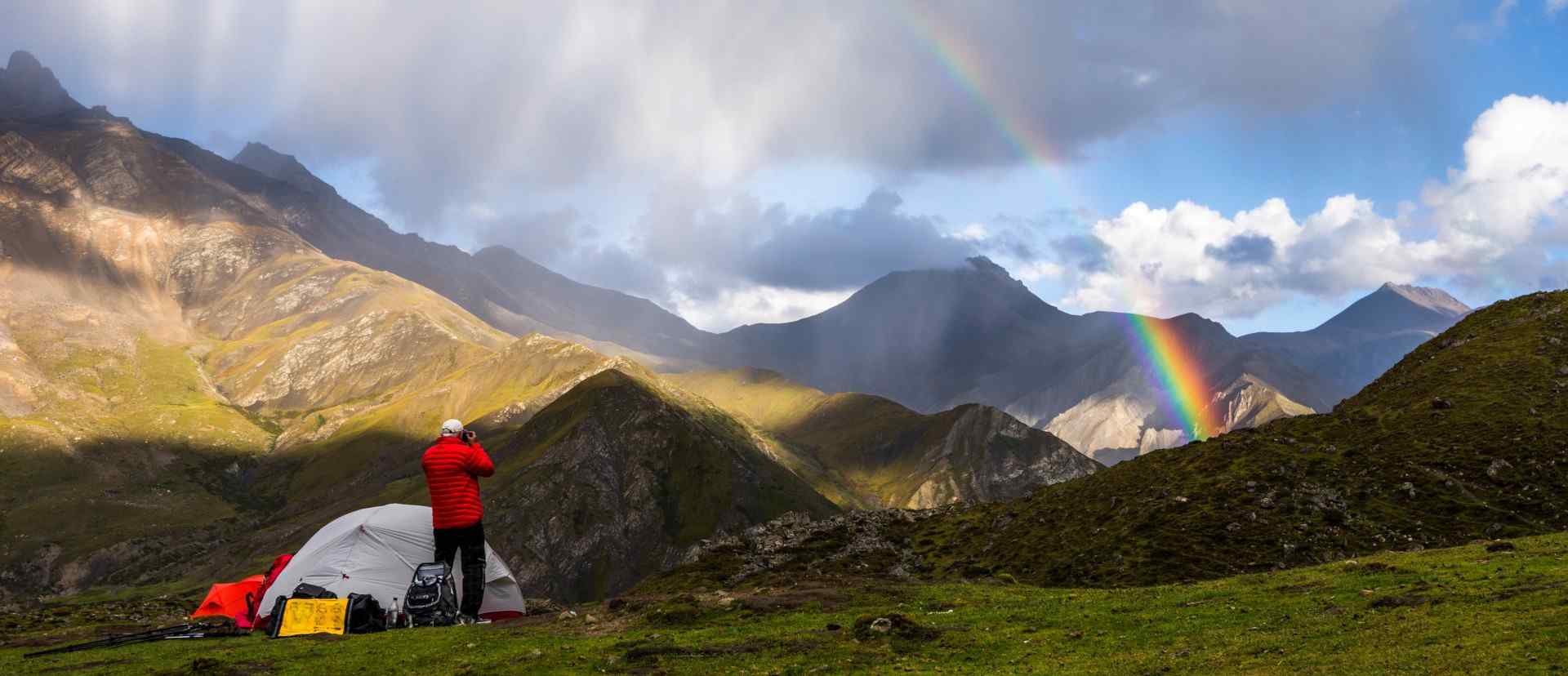Trip Info
-
Langtang
-
Modrate
-
8 Days
-
Hotel/Trekking guest houses
-
2 - 15 People
-
March-May/Sep-Nov
-
3500m
Overview
Langtang valley trek is also popularly known as the valley of glaciers trek on the journey to wilderness Himalayas making it one of the wildest trekking in Nepal. Langtang is one of the closest places from Kathmandu Valley where you could get to see huge snow-capped mountains and gorgeous glaciers. Langtang valley is located only 19 miles from Kathmandu in the north. Few hours of a drive from Kathmandu will take you to the beautiful Langtang region. The whole Langtang valley is surrounded by Mount Langtang Lirung (7246m) that offers pine forest, rugged rock, swift mountain streams and snow-capped peaks.
Though Langtang Valley Trek is very close to Kathmandu, the Langtang Region is as wild as any Tibetan highlands with the peaceful rural scenery. The starting point of the trekking will be Syabrubensi. From here we will follow the Langtang River to the east until we get to Kyanjin Gompa (3,880) with the overnight stay at one of the hotels here. Heading up a gentle slope, we pass along the dramatic ridges through local villages inhabited by Tibetans, Tamang and Sherpa people. Then we will come across the lush forest of Rhododendrons and oaks. Once we arrive at Langtang valley we will find flapping prayer flags in the main tracks, brightly painted shortens and Mani walls where yak herders welcome you to the land of these high mountain people. Langtang Lirung, Langshisa, Ganja la Peaks are the center of attraction that we can see during the trek to Langtang Valley trekking trip.
Health and Experience Requirements
Virgin Nepal Trek and Expeditions Langtang valley trek is a moderate trek suitable for passionate walkers who have the ability to walk at least 4-7 hours a day with a light rucksack. In some days we might even need to walk 8 to 9 hours. Walking in higher altitudes is more physically demanding than walking in the lower altitudes; however, if we are in excellent health with average physical fitness, have a positive attitude, self confidence and strong determination, we can accomplish the trek successfully. Exercising and jogging regularly for some weeks prior to the trip is a good idea to enhance our strength and stability. Past hiking experience would be an asset but no technical skill is required for this trip. It is vital that we consult with our doctor before we decide and set up for the Langtang valley trek.
Participants with pre-existing medical conditions such as heart, lung, and blood diseases should inform Virgin Nepal Trek and Expedition before booking the trek.
A Typical Day On The Trail…At dawn, Sherpa wakes us up and offers a cup of warm tea with a smile. After freshening and finishing up our tea, we will have breakfast before setting off. At the right moment, we pack our bags and assemble in the dining hall before setting off on the day’s trek. After approximately 2-3 hours of trekking we take a break for lunch somewhere on the trail. After a relaxing lunch, we typically spend around 2-3 hours or even more sometimes on the trail before reaching our stopping point. Throughout the day, we will take frequent rest breaks and take time to admire the fascinating mountain views. We further take plenty of pictures of ourselves with incredibly panoramic mountains, rivers, landscapes, prayer flags, temples, shrines, cairns, and monasteries. Once we arrive at our tea house, we take a brief rest, shower, and have a light snack with tea or coffee. If we are so inclined, we may take a short walk through the village and surrounding neighborhoods. After checking into our room we have time to read or chat with fellow trekkers or with Virgin Nepal Trek and Expedition’s crew members. Following a warm dinner in a cozy dining hall our trek leader briefs us on the next day’s itinerary. We give breakfast order which allows our guide to have everything ready for us for the next morning. Extra time can be spent on reading, enjoying some drinks or playing cards. Our Virgin Nepal Trek and Expedition crew members love to teach various Nepali card games as well as learning new Western games. Finally, it is off to bed for a well earned night’s rest before starting all over again the next day.
Travel Insurance
It is a condition upon joining any of “Virgin Nepal Trek & Expedition” trips that all clients be insured for comprehensive expenses that might incur due to medical issues or accidents (this includes air ambulance, helicopter rescue, and treatment costs). Please note that we don’t arrange or sell insurance.
Acclimatization
Virgin Nepal Trek & Expedition ‘Everest Base Camp Trek’ itinerary is planned with a high degree of awareness of AMS (Acute Mountain Sickness). Going up at higher altitudes too fast causes a medical condition serious enough to result in death. The higher the altitude, the less oxygen will be in the air. For example, at an altitude above 5000m, there is 50% less oxygen than at sea level. Therefore, our body needs many days to adapt to an environment with less oxygen. Our itineraries generally allow sufficient time to acclimatize. So, for a safe trek, it is absolutely essential to allow sufficient time for acclimatization. Sensible planning is therefore required to minimize the risk of AMS. Virgin Nepal Trek and Expedition (we) advises guest(s) with known heart, lungs or blood diseases to consult their doctor before traveling. Mild headaches, fever, loss of appetite or stomach disorders are symptoms of AMS.
eader(s) and Staff Arrangements
The most significant thing that makes our Everest Base Camp Trek successful, enjoyable and memorable is the skilled, experienced, courteous and helpful trek leader and the crew members with ability of operating our days in the mountain smoothly. Our trek will be led by the best and most professional leaders. All of Virgin Nepal Trek and Expedition’s trekking leaders are carefully selected on the basis of their appropriate experience, leadership skills and personal aptitude. With an objective of sustaining local communities, Virgin Nepal Trek and Expedition only employs local staff who have adequate knowledge about culture, ecosystem, flora, fauna, geography, and history of their local region/s. The trek and expedition leaders have undergone the following trainings:>Intensive Wilderness First Aid>Trekking Guide Training>Eco Trekking Workshop and Adventure Meet>English Language>Conservation and Biodiversity>Rock climbing, Ice Climbing and Mountaineering (for expedition leaders)To meet “Virgin Nepal Trek & Expedition” team, check out the Our team .
Porter Care
(We) Virgin Nepal Trek & Expedition is firmly committed to porter rights. We make sure that all our porters are well treated and well paid. Further, Virgin Nepal Trek & Expedition provides the level of shelter, clothing and footwear that these harsh environments demand. Porters who become sick are treated with the same care and attention as other team members. We have previously used helicopters at company’s expense to rescue porters from dangerous situations. And for the porter’s sake, all trekkers keep their luggage bag weight under 15kgs/33 pounds. We support the work of the International Porter Protection Group (IPPG), making our resources available to them to help improve the working conditions of the porters.
Environmental Concerns
The Everest region is stunningly beautiful, but equally fragile. Future generations have just as much of a right to appreciate it as we do. Hence, the tourism industry has an obligation to protect and preserve it. Virgin Nepal Trek and Expedition employs a ‘zero impact’ policy on the natural environment and the traditional communities that live at the travelled places. We enforce a number of do’s and don’t.


